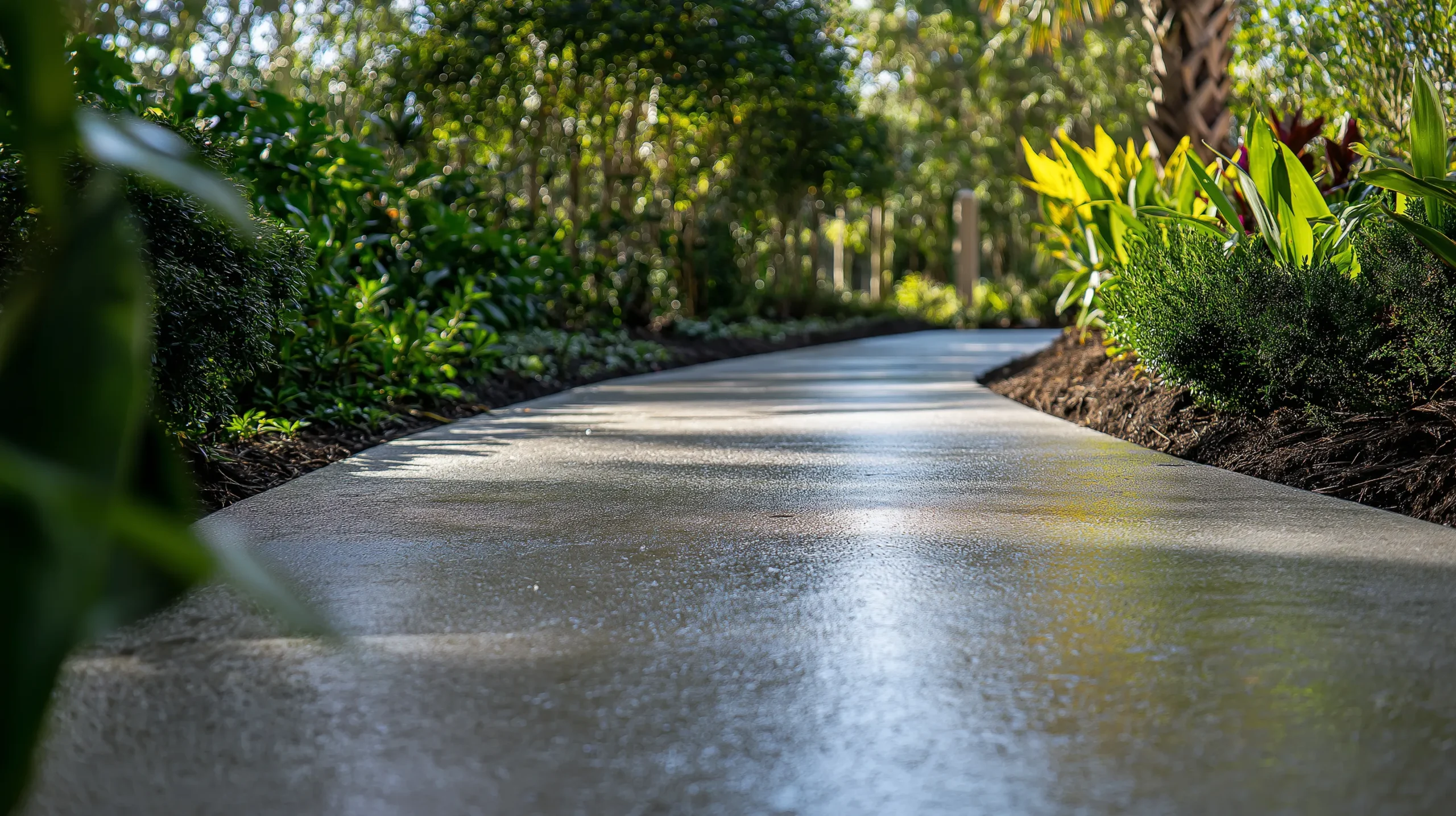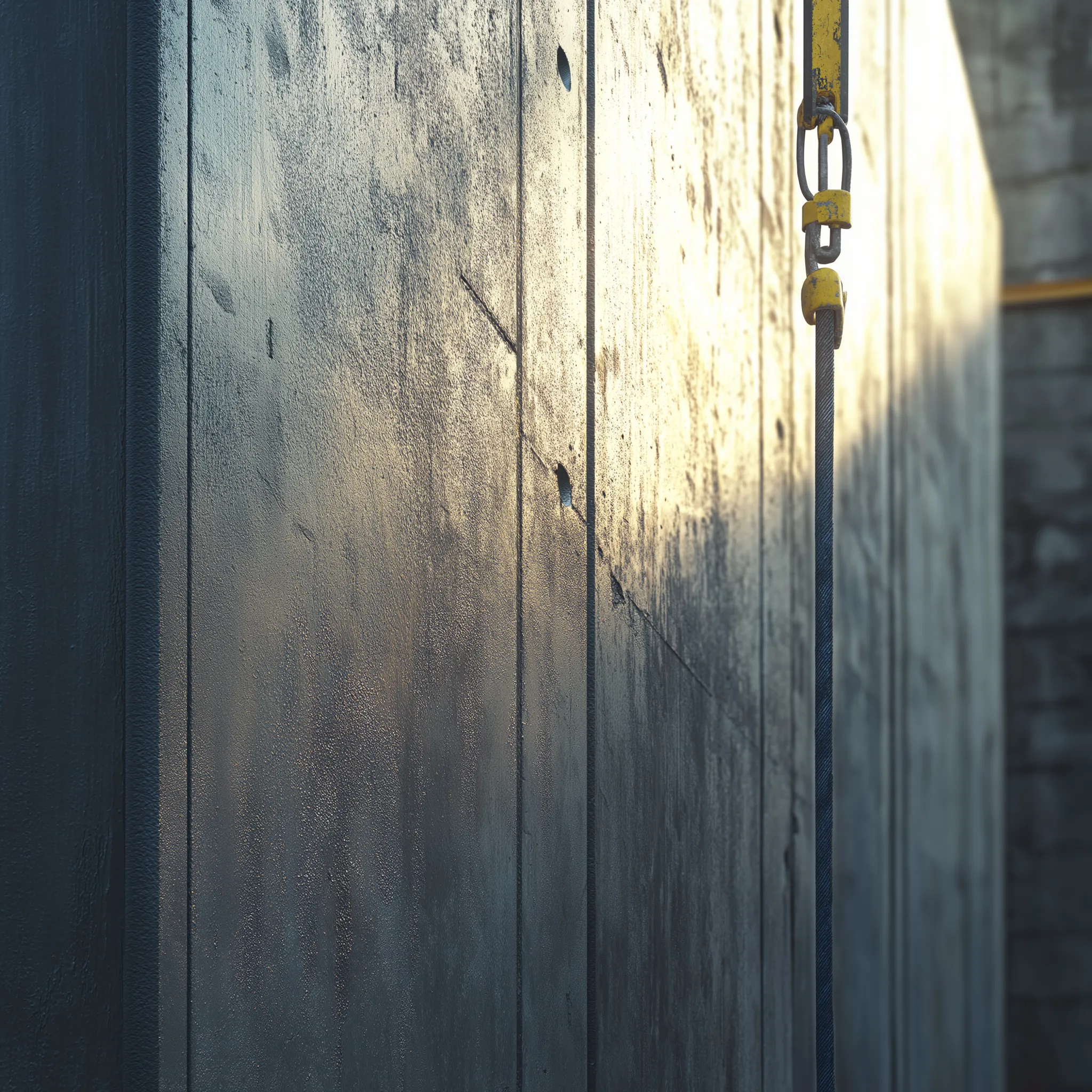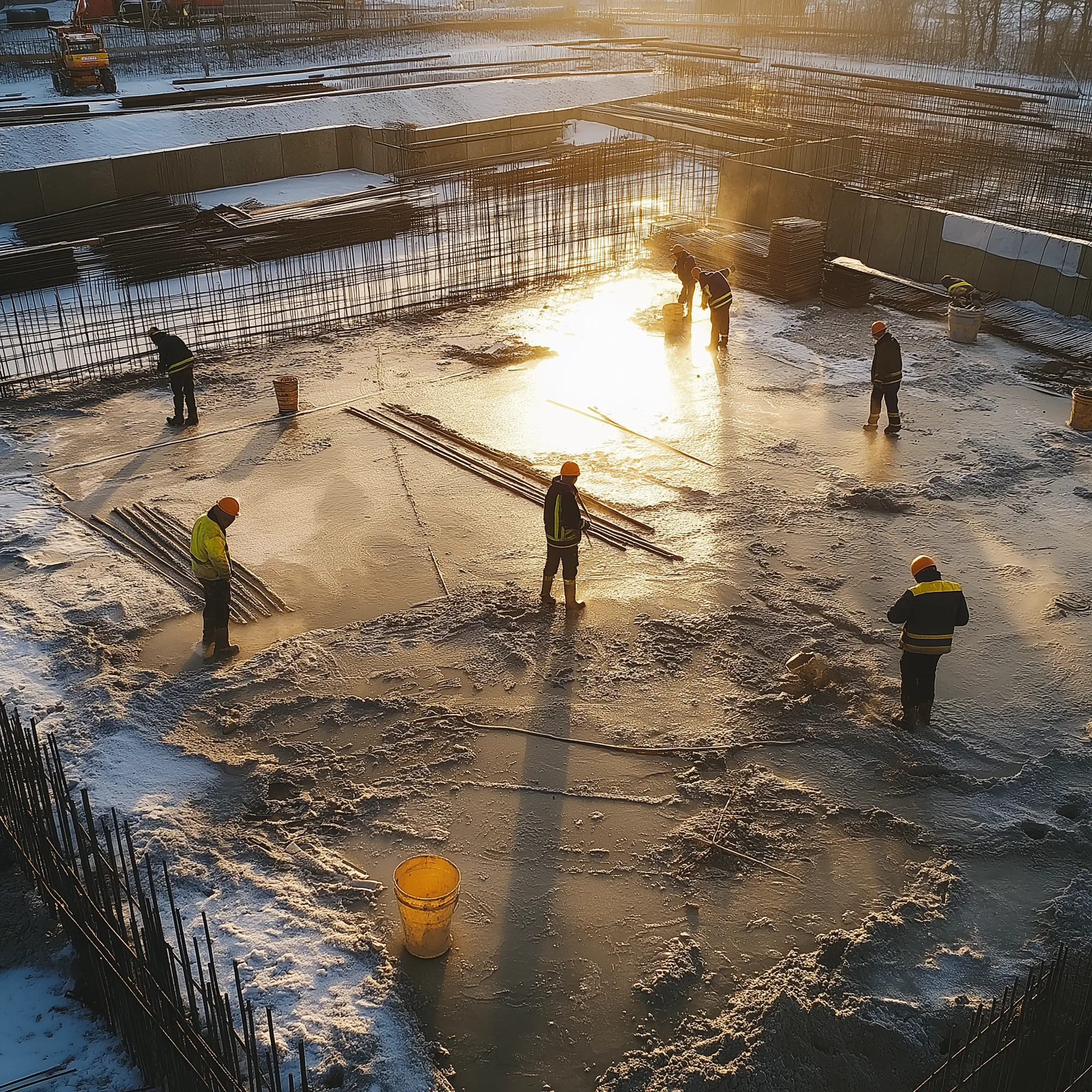An Introduction to Curing Compounds in Concrete: Why We Cure
Understanding the intricacies of curing concrete is fundamental in our industry. In my years of experience in the concrete construction business and here at SpecChem, I’ve had countless discussions, trials, and hands-on moments with curing compounds. Let me share some insights I’ve gleaned over the years.
So, why do we cure concrete? In essence, it’s to prevent moisture loss. But to provide a clearer picture:
Concrete consists of cement, aggregates, and water. The hydration process, initiated when water meets cement, is pivotal for the concrete to gain its strength. However, if water evaporates prematurely, this can lead to issues such as shrinkage cracks, dusting, and crazing on the surface.
Simply put, curing ensures that the concrete retains sufficient moisture during the critical early stages of hydration, yielding a more durable and stronger slab.
Water vs. Chemical: A Concrete Veteran’s Perspective on Curing Methods
Water curing entails keeping the concrete’s surface consistently wet, mostly through a continuous water sprinkle. While it’s often seen as the gold standard because of the direct moisture it offers to the concrete, it does have its drawbacks. It can be labor-intensive, use up resources, and sometimes, due to practical reasons, might not be feasible.
This is where chemical curing compounds come in. These compounds, from my experience, aim to maintain at least 95% of the moisture in the slab. When applied accurately, they create a thin film on the concrete surface, significantly minimizing water evaporation. In situations where water curing isn’t viable, these compounds can be lifesavers.
Curing concrete is more than just a step in the construction process. It’s about ensuring each concrete slab’s longevity and strength. While water curing remains a popular choice, there are instances where chemical curing compounds are more suited.
Understanding Curing Compounds: A Comprehensive Guide to Choices
Curing compounds play a pivotal role in concrete construction. Over my years in the field, I’ve come to appreciate the nuanced choices we have when it comes to these compounds. Not every compound is created equal, and understanding their individual strengths can make a significant difference in your project’s outcome. Here’s a deep dive into some of the most prevalent types.
- Acrylic Cures
Purpose: Acrylic-based curing compounds primarily work as a sealing agent, forming a thin film layer on the surface of freshly placed concrete. This layer aids in moisture retention, ensuring the concrete undergoes proper hydration.
Product Selection: When choosing an acrylic cure, consider factors such as drying time, finish, and the desired bond with subsequent coatings or treatments. SpecChem offers a line of acrylic cures including Cure & Seal WB, Cure & Seal EX, Cure Shield, Cure Shield EX, and Cure Shield WB. Our Cure & Seal line additionally comes in variations that are VOC-compliant and with differing solids percentages.
Application Techniques: Ensure the concrete surface is free from standing water. Apply the cure uniformly using a sprayer, ensuring there’s complete coverage without puddling.
- Resin-Based Cures
Purpose: Resin-based cures are designed to seal and protect fresh concrete. They form a protective layer, offering resistance to water, chemicals, and abrasions.
Product Selection: These are often chosen for projects requiring enhanced surface protection, especially against chemicals. Look for products that offer resistance to yellowing under UV exposure. SpecChem’s resin-based cures include SpecRez & Crystal Rez.
Application Techniques: Similar to acrylics, the concrete surface should be free from excess water. Apply uniformly, ensuring no streaks or voids.
- Wax Cures
Purpose: These curing compounds work by forming a water-resistant barrier on the concrete surface. The wax film not only aids in retaining moisture but also offers a shine to the concrete surface.
Product Selection: Wax cures are ideal for surfaces where a glossy finish is desired. However, they may not be suitable for surfaces that will receive subsequent treatments, as the wax can impede bonding. SpecChem’s wax cures include Pave Cure WW.
Application Techniques: These cures are generally applied using a sprayer. It’s essential to achieve an even coat for consistent results.
- Sodium Silicate Cures
Purpose: Sodium silicate curing compounds penetrate the concrete’s surface, reacting with its calcium hydroxide to form a hard, water-resistant layer.
Product Selection: These are great for industrial floors or areas with heavy wear and tear, as they not only aid in curing but also in surface densification. SpecChem’s sodium silicate cures include Cure Hard & E-Cure.
Application Techniques: It’s crucial to apply sodium silicate cures on a wet surface. Post-application, the surface should be kept wet for a certain duration to ensure proper reaction.
Making the Right Choice: Solvent or Water-Based?
Your choice between solvent and water-based acrylics should be driven by the specific needs of your project:
- Project Environment: For indoor projects or areas with minimal ventilation, water-based acrylics are your best bet due to their reduced odor.
- Desired Finish: Aiming for a glossy finish? Solvent-based might be your go-to. For a subtler look, water-based acrylics are the answer.
- Substrate Condition: If your substrate is a bit damp, solvent-based products tend to adhere better.
Understanding ASTM C309 and C1315: A Spec Guide for Curing Compounds
Navigating the world of curing compounds means knowing a thing or two about ASTM standards. If you’ve spent any time around concrete, you’ve likely come across these designations. So, let’s dive deep and break down these essential benchmarks that shape our industry.
ASTM C309: A Starting Point
The primary focus of ASTM C309 is on liquid membrane-forming compounds, especially those used for curing concrete. Let me offer a clearer picture:
Purpose: This standard primarily addresses the efficiency of curing compounds in reducing water loss from freshly placed concrete. Retaining that moisture, as many of us know, is crucial for the hydration process.
Types and Classes: ASTM C309 delineates compounds into two main types.
- Type 1: Clear or translucent without dye.
- Type 1-D: Clear or translucent but with a fugitive dye.
- Type 2: White pigmented.
Then, there’s the classification based on how they work:
- Class A: No restrictions on the vehicle solids material in the curing compound.
- Class B: The vehicle solids material in the curing compound must be all resin.
ASTM C1315: Spotlight on Acrylics
Building on the base of C309, ASTM C1315 zeroes in on the specifics of acrylic curing compounds.
Purpose: This standard addresses liquid membrane-forming compounds that are both water-based and acrylic. The focus here is to ensure that these compounds provide an adequate moisture retention layer when applied to concrete surfaces.
Details: Just like its predecessor, ASTM C1315 further classifies the compounds.
- Type I: Clear or translucent.
- Type I-D: Clear or translucent with dye.
- Class A: Ready for use.
- Class B: Requires onsite dilution.
Solids Content: Why It Matters
Solids content in curing compounds has significant implications. As you’ve noticed in the classifications, a higher solids content often leads to a thicker membrane when applied, which can be beneficial in reducing water loss. However, it’s essential to strike the right balance. Too thick of a membrane might lead to other challenges like adhesion issues in subsequent treatments.
Spotlight on Sodium Silicate: From Cure Hard to E-Cure
In the world of concrete curing, sodium silicate-based products are some unsung heroes. Through years of hands-on experience and extensive research, I’ve come to deeply appreciate the unique features and benefits of these products. Today, I’m particularly excited to shine a light on two of them: Cure Hard and E-Cure.
The Benefits of Cure Hard
Cure Hard is a popular SpecChem product, and for good reason. This sodium silicate-based compound offers an exceptional combination of sealing, curing, and hardening. When applied to freshly poured concrete, Cure Hard forms a thin, protective layer that serves multiple purposes:
- Moisture Retention: It effectively locks in essential moisture, ensuring that the concrete continues to cure and develop strength as intended.
- Abrasion Resistance: A significant attribute of Cure Hard is its ability to make surfaces more resistant to wear and tear, particularly in high-traffic areas.
- Reduced Dusting: Nobody likes a dusty surface, and thanks to Cure Hard, the concrete exhibits fewer tendencies to release dust particles over time.
E-Cure: A Leap Forward in Curing Technology
Transitioning from Cure Hard, let’s explore E-Cure—a product that has carved its niche in the industry. Not only does it retain the core benefits of a sodium silicate compound, but it also brings some innovations to the table:
- Eco-Friendly Composition: As the name suggests, E-Cure leans into environmental consciousness. It’s a water-based compound, which translates to lower VOC emissions and a safer workspace.
- Broad Compliance: E-Cure is designed to comply with both ASTM C309 and ASTM C1315, making it an adaptable solution for a range of projects.
- Versatility: Whether you’re looking at a residential project or a commercial one, E-Cure stands out as an all-rounder. Its compatibility with subsequent treatments, paired with its curing efficacy, makes it a preferred choice for many.
In Conclusion
Sodium silicate-based products, especially the likes of Cure Hard and E-Cure, bring a distinct set of advantages to the concrete curing process. Their ability to seamlessly integrate curing, sealing, and hardening ensures that concrete professionals can achieve optimal results with fewer products.
Having hands-on experience with these compounds, I can attest to their effectiveness and versatility. But like always, the key lies in understanding your project’s specific needs and selecting the right product accordingly.





